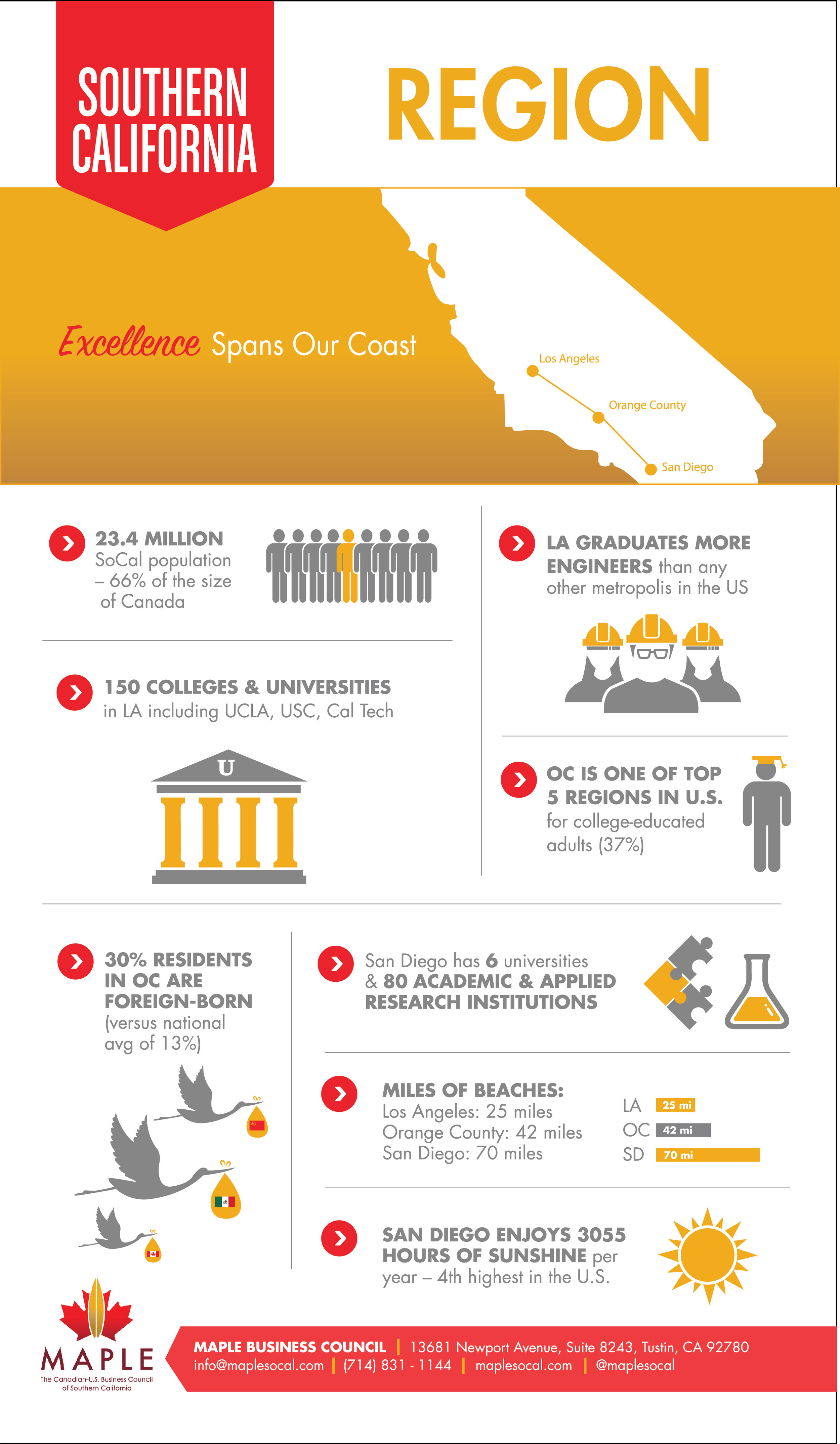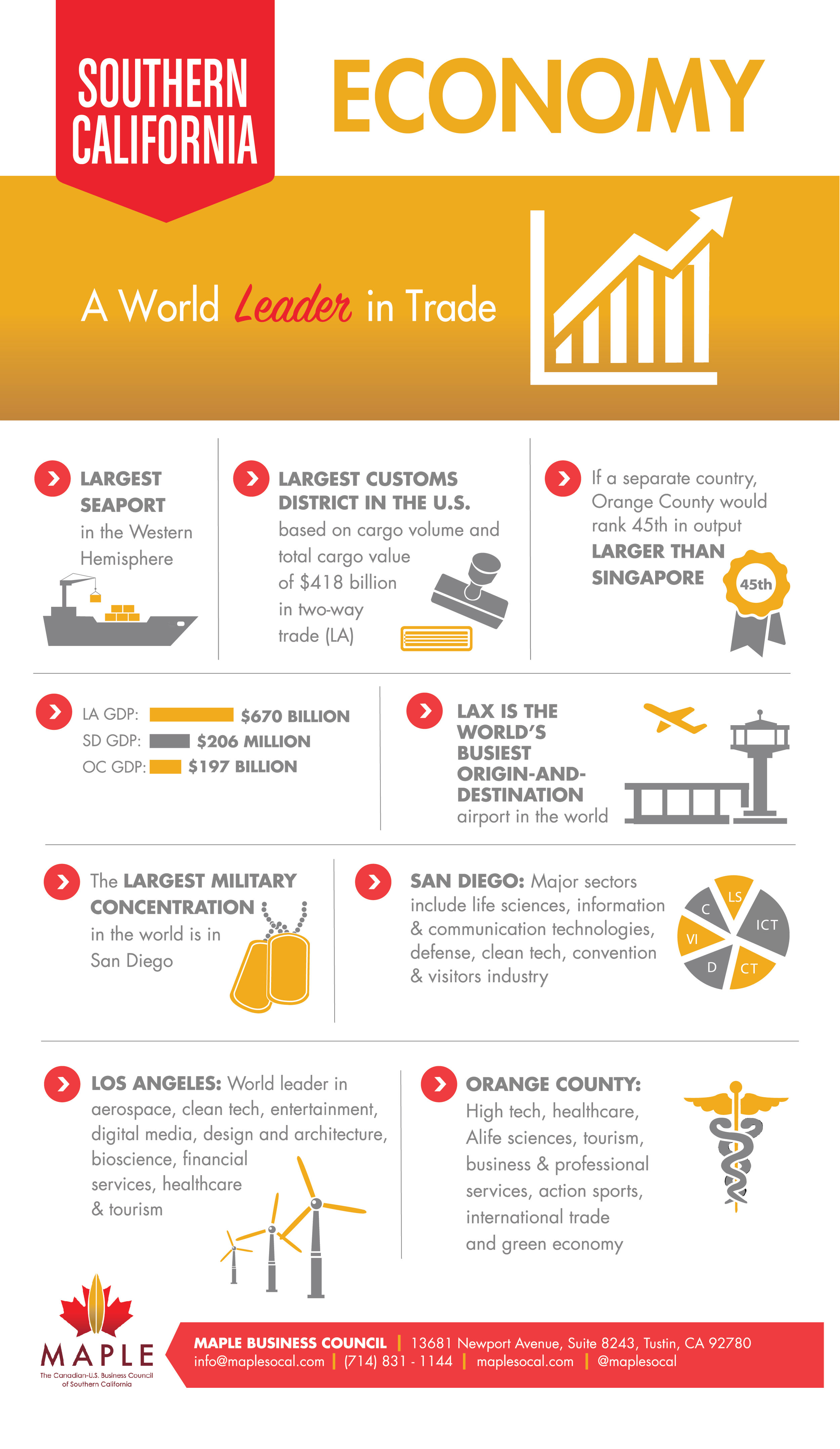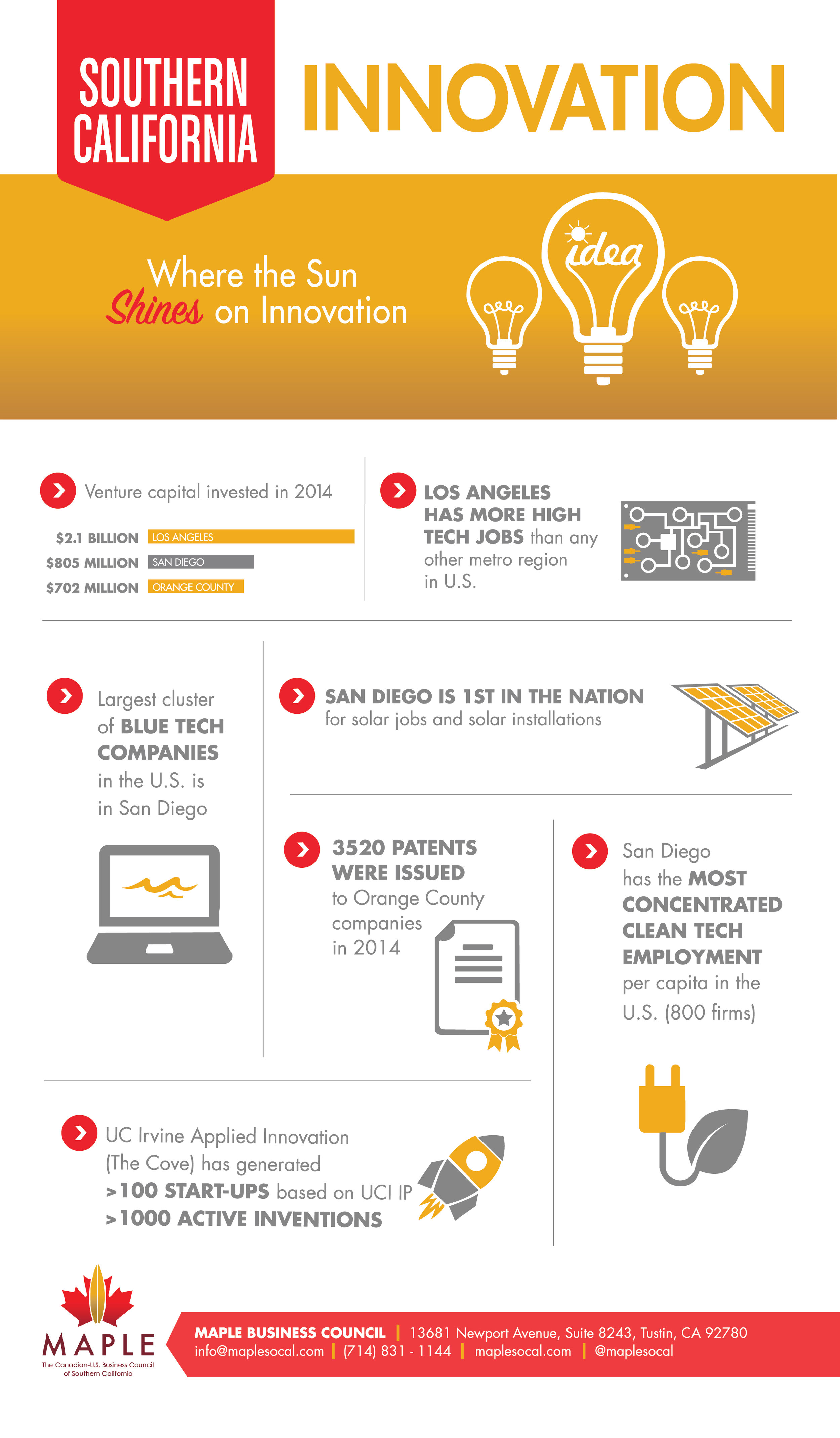The Southern California Innovation Corridor - Excellence Spans Our Coast
Excellence spans our coast. Silicon Beach, Pasadena, Irvine, San Diego, Downtown LA and Santa Barbara – the names are all familiar. Many of us have visited for business or pleasure. But how much do we know of these communities as centers of innovation? Moreover, how are they different from each other in their sector focus and supporting ecosystems? And if I am seeking to launch my innovation in SoCal or expand my business, which is the best location for my goals?
Now consider an investor from outside the state or the country. What is known across borders about the diversity and depth of the innovation centers that are strung along Southern California? Individually, each community has their own personality, sector strengths, champions and sphere of influence and new innovation centers are emerging. For example, the City of Murrieta is nurturing an innovation community within its attractive corner of Riverside County.
What is missing is a macro view of the entire region and the changes that continue to shape its contours. This collective view can serve as a calling card for the region benefiting all within it.
There are existing examples of innovation corridors that have established an international reputation for the collective strength of their communities who share a focus on tech startups. Most notable is the 20 mile-long Silicon Valley known worldwide as a preeminent center for tech and innovation.
One perhaps less known here in Southern California is the Toronto-Waterloo Corridor in Ontario, Canada. Anchored by Canada’s financial capital of Toronto and Waterloo Region with its three primary cities of Cambridge, Kitchener and Waterloo, the 70-mile corridor boasts 16 universities & colleges, access to 6 million people with 15,000 tech companies and 200,000 tech workers. It also offers a compelling collocation of auto and tech corridors for autonomous vehicle innovations.
As an innovation center north of the 49th parallel, it naturally takes a little more effort to establish recognition in the U.S despite the world-class University of Waterloo, heavy sustained recruitment from Silicon Valley and the second-highest density of startups per capita in North America. What is truly impressive is the active collaboration of the cities within the Waterloo Region both with each other and with Toronto. The region has recognized that despite the depth of innovation and sector strengths in each community within the corridor, the collective region, the Toronto-Waterloo Corridor, is stronger by marketing the strengths and shared resources of the overall region. MAPLE saw this first hand when we hosted the mayors of Waterloo Region and the CEO of the region’s economic development corporation, for a panel discussion on nurturing an innovation economy in downtown Los Angeles earlier this year.
Southern California can learn from the regional marketing model such as the Toronto-Waterloo Corridor. Without taking away focus on each individual SoCal tech community, developing a complementary tier of marketing around a Southern California innovation identity will help attract foreign investment by giving more clarity to what exists and where within the region. FDI is essentially matchmaking and helping to match the investor with the best home for their business goals is a big win/win. It will also help Southern California compete with Silicon Valley more effectively when foreign investors seek a California footprint.
The investment dollars, world-class universities, start-up incubators and co-working partners are already here and growing. The World Trade Center Los Angeles recently made a significant step forward in marketing the region with its research on foreign direct investment not just for LA County but for the six counties in the region.
These infographics on Southern California begin to tell a story of what makes a Southern California Innovation Corridor profile interesting.
Lets work together to build an identity for Southern California as an innovation region to attract more of the world’s leading businesses and brightest entrepreneurs to one of the most beautiful and dynamic parts of the world. As the expression goes, “a rising Southern California tide lifts all boats”
Stephen Armstrong is co-founder of MAPLE Business Council, a non-profit senior executive council promoting investment, trade and entrepreneurship between Canada and Southern California. Stephen is principal of The 360 Marketer, a marketing consultancy. For more information on MAPLE, please visit www.maplesocal.com.




